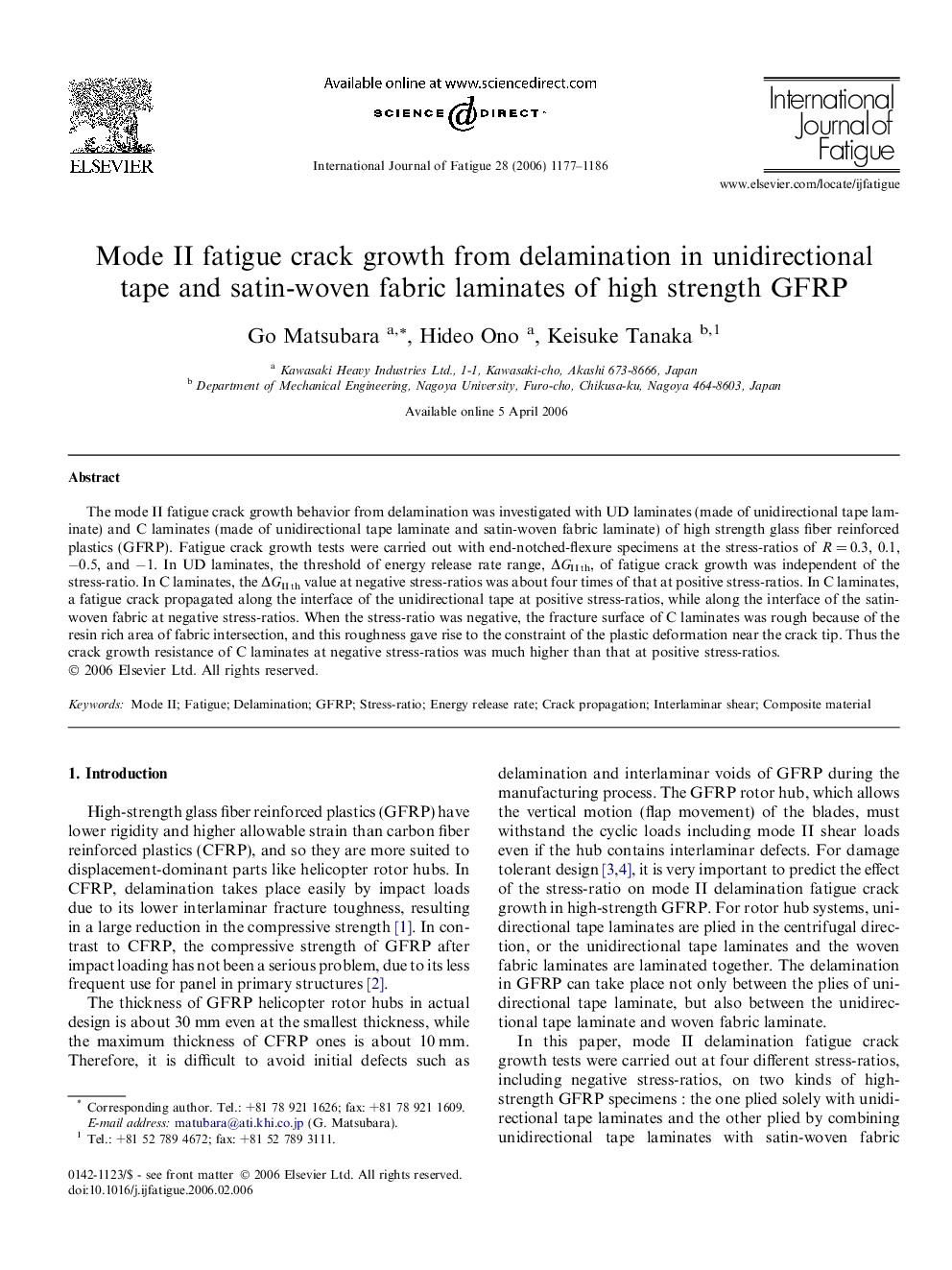| Article ID | Journal | Published Year | Pages | File Type |
|---|---|---|---|---|
| 781730 | International Journal of Fatigue | 2006 | 10 Pages |
The mode II fatigue crack growth behavior from delamination was investigated with UD laminates (made of unidirectional tape laminate) and C laminates (made of unidirectional tape laminate and satin-woven fabric laminate) of high strength glass fiber reinforced plastics (GFRP). Fatigue crack growth tests were carried out with end-notched-flexure specimens at the stress-ratios of R = 0.3, 0.1, −0.5, and −1. In UD laminates, the threshold of energy release rate range, ΔGII th, of fatigue crack growth was independent of the stress-ratio. In C laminates, the ΔGII th value at negative stress-ratios was about four times of that at positive stress-ratios. In C laminates, a fatigue crack propagated along the interface of the unidirectional tape at positive stress-ratios, while along the interface of the satin-woven fabric at negative stress-ratios. When the stress-ratio was negative, the fracture surface of C laminates was rough because of the resin rich area of fabric intersection, and this roughness gave rise to the constraint of the plastic deformation near the crack tip. Thus the crack growth resistance of C laminates at negative stress-ratios was much higher than that at positive stress-ratios.
